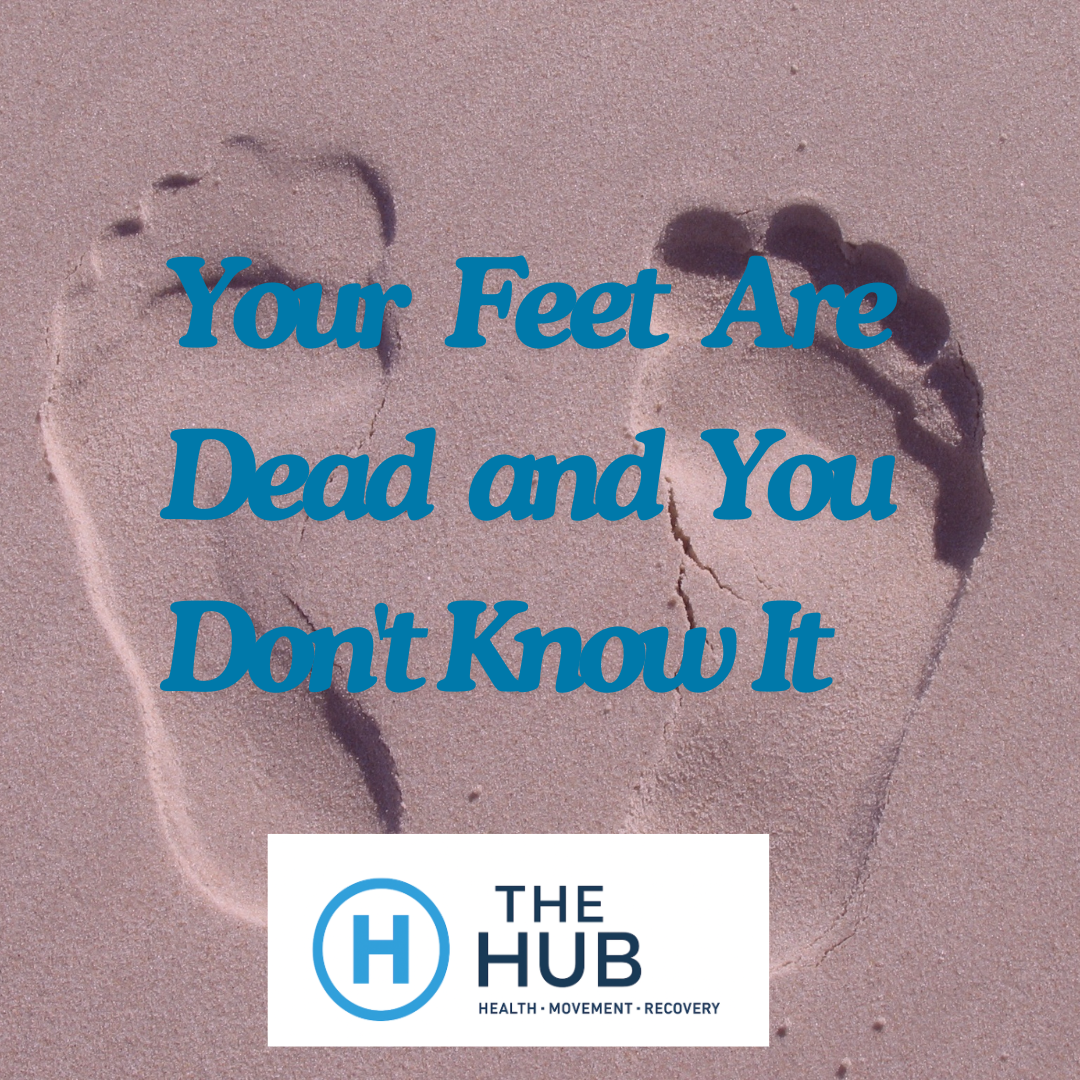
Your Feet Are Dead and You Don't Know It
Your knee hurts. Your hip aches. Your lower back screams after sitting all day.
You treat the symptoms. You stretch the tight spots. You strengthen the weak areas.
But you're missing the real problem. Your feet are literally dead to you.
Most people have completely lost the neural connection to their feet. The brain-foot communication that should guide every step, every movement, every moment of balance has gone silent.
Your feet are the sensory interface between the ground and your entire body. They're your proprioceptive feedback link into your nervous system for balance, control, and movement.
When that connection dies, everything above suffers.
The Foundation Problem
Think of your feet like the foundations of a building. If the foundations aren't strong, the entire structure above will crack and shift.
Patients walk into clinics complaining of knee pain, hip pain, lower back pain. When we unravel what's actually happening, the root cause is often foot mechanics.
Your feet contain 33 joints and 26 bones. That's a quarter of all the bones in your body, packed into your foundation.
Most people can't control a single one of them consciously.
Building Your Foundation
The real test isn't about your tripod - it's simpler and more important: Do you have pain anywhere in your body?
If you do, you need to make sure your feet and their function are properly assessed. Pain elsewhere often starts with compromised foot mechanics.
But before addressing pain, you need to build strength from the ground up. That's where the tripod foundation comes in.
The tripod isn't a test - it's the foundation for building strength.
Take your shoes off right now. Stand barefoot and feel your feet in contact with the ground.
Find three distinct points of contact: the big toe ball, the little toe ball, and the heel. This is your tripod foundation.
Learn to distribute your weight evenly across all three points while seated or standing still. The tripod stance is a static foundation - you're not moving yet. When we move - walking, running - your foot is a mobile adapter, continuously adapting throughout each step. As you strike the ground with your heel, particularly the lateral aspects of the heel, you're in a more rigid point of contact with the foot and ankle. Then the foot adapts to distribute load, moving into that more pronated position. As you go through mid-foot and toe-off, the arch engages, the windlass mechanism kicks in, and you move into that supinated position - a more rigid structure again. You need that adaptability to absorb forces. The foot must be mobile enough to adapt to the ground, yet stable enough to propel you forward. But this static tripod position is where we start building that neural connection and strength. This foundation becomes the base for everything else you'll build.
Building the Connection
Start with the tripod stance. Feel the big ball, little ball, and heel in ground contact. Think of it like a tripod, keeping weight evenly distributed.
From there, try "short foot" or metatarsal doming. It's like doing crunches with your feet. You're strengthening the arch profile while maintaining that tripod stance.
This is where it gets interesting.
When you can get your big toe bending properly, it activates something called the windlass mechanism. This lifts your arch profile, causes your tibia to rotate, your femur to rotate, and links directly into your hip and lower back.
Suddenly, you feel your core engage. The chain reaction from toe to glute becomes real.
The Neural Challenge
Learning foot control feels like trying to wiggle your ears. The neural pathways have been dormant for years, maybe your entire life.
Slowly, slowly, catch a monkey. This takes time.
The benchmark test is simple: Can you do a toe wave? Fifth toe to fourth toe to third toe to second toe to first toe. Can you fan them? Can you lift each one individually?
If you can master that individual toe control, your brain is starting to talk to your feet again.
Safety First
Some people shouldn't attempt this without professional guidance. If you have neuropathy, you might not be able to sense your feet properly. Nerve endings lose feeling and sensation.
This becomes dangerous. You won't sense a piece of glass in your foot or a stone. You won't feel pain that signals damage.
If you have neurological issues, rheumatoid arthritis, multiple sclerosis, or other underlying health conditions, consult a Healthcare Professional Council registered podiatrist first.
The Mobility Foundation
Movement comes before strength. If you have structural changes in your feet, trying to force movement can cause more pain.
Start with gentle mobility exercises. Feel what movement you do have. Work within your current range before trying to expand it.
The subtalar joint in your foot is the most complex joint in the human body. Respect that complexity.
Your Daily Practice
Take your shoes off daily. Feel your feet in contact with different surfaces.
Practice the tripod stance during everyday activities. Feel the weight distribution while brushing your teeth, washing dishes, or standing in line.
Work on that toe wave. It sounds simple, but it's the clearest sign that your neural pathways are awakening.
Most people don't understand the importance of foot awareness. They treat their feet like numb platforms instead of sophisticated sensory organs.
Your feet are your foundation. When you reconnect with them, everything above starts working better.
The chain reaction travels from your toes to your core, from your arch to your posture, from your foundation to your entire movement pattern.
Start with awareness. Feel your feet. Build the connection.
Your knees, hips, and back will thank you.